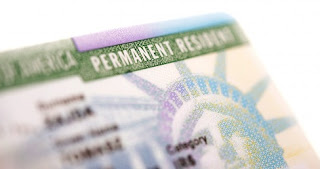The Administration Let Over 200,000 Green Cards Go to Waste This Year
The Biden administration failed to issue more than 200,000 permanent resident visas (or “green cards”) that were allotted in fiscal year 2021 for immigrants sponsored by U.S. employers or family members.
Roughly 150,000 visas for family-based immigrants and as many as 80,000 visas for employment-based immigrants had gone unused by September 30, which was the last day of the 2021 fiscal year.
This falls drastically short of the total number of green cards—675,000—that the government can issue each year. Out of this total, 480,000 visas are reserved for “family preference” immigrants; 140,000 for employment-based immigrants; and 55,000 for Diversity Visa lottery winners.
This marks the second year in a row that over 100,000 family-preference visas have gone unused. In 2020, the COVID-19 pandemic caused U.S. embassies and consulates abroad to close, which temporarily halted immigrant visa processing. In addition, the Trump administration used the pandemic as a pretext to implement a ban on the issuing of many immigrant visas. As a result, 122,000 family-preference visas went unused and were added to the 2021 cap on employment-based visas, which raised the total to 262,000.
Embassies and consulates have reopened since then, and the Biden administration lifted Trump’s immigrant visa ban. The increase in the number of employment-based visas actually presented a rare opportunity for the administration to make a sizeable dent in the massive backlog of cases.
But the Biden administration was unable to speed up processing sufficiently to meet the 2021 cap on either family- or employment-based immigrant visas. Continued budget challenges and mismanagement at U.S. Citizenship and Immigration Services further hurt the administration’s chances of hitting the mark.
The 150,000 unused family-preference visas have been added to the fiscal year 2022 cap on employment-based visas, bringing the total to 290,000. But the unused employment-based visas from fiscal year 2021 will remain lost without Congressional action.






